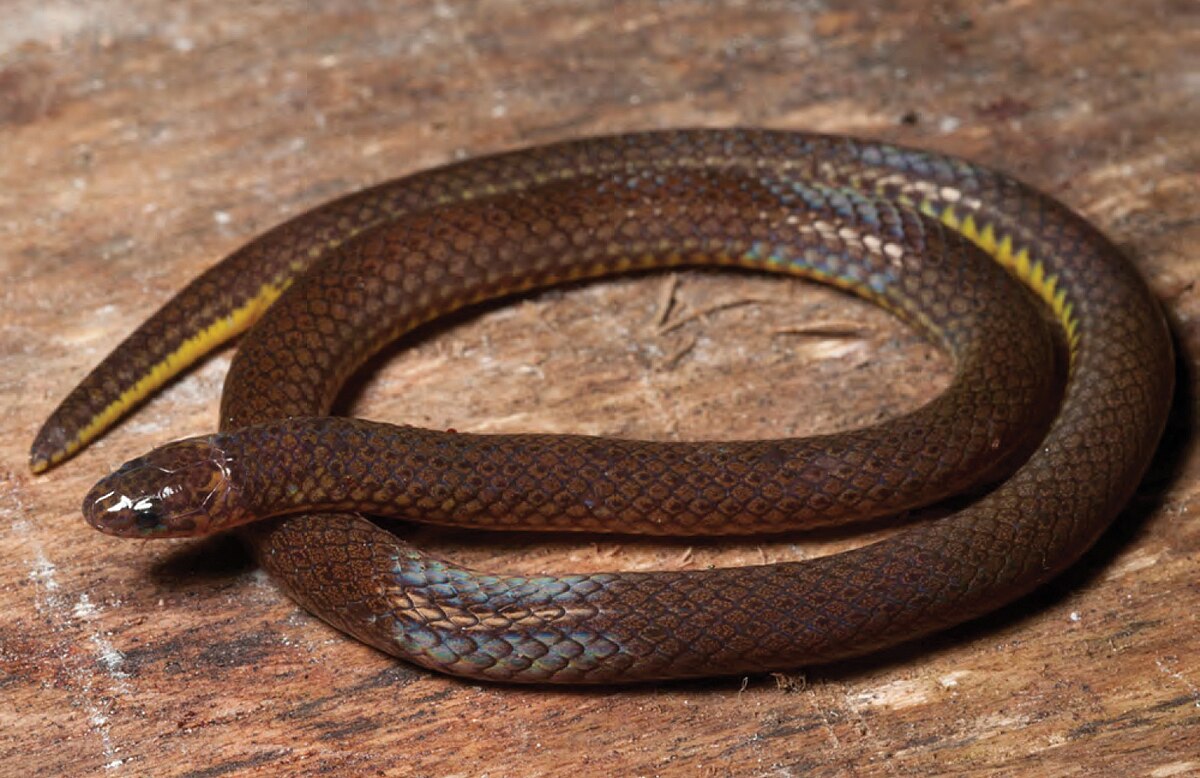
The world of snakes is incredibly diverse, with countless species inhabiting various corners of the globe. One often overlooked and misunderstood snake species is the worm snake. Despite its name, the worm snake is not a worm at all, but a fascinating reptile that belongs to the subfamily Typhlopinae.
In this article, we will dive into the world of worm snakes and uncover 15 amazing facts about these mysterious creatures. From their unique physical adaptations to their intriguing behavior and their essential role in ecosystems, worm snakes will surely captivate your curiosity.
So, join us as we embark on a journey to discover fascinating insights about these often overlooked reptiles. Prepare to be amazed by the wonders of worm snakes!
Key Takeaways:
- Worm snakes are small, burrowing, and harmless creatures that play a vital role in controlling insect populations and maintaining soil health in forested areas.
- With their unique burrowing ability, worm snakes help balance ecosystems by controlling pest populations and contributing to the health of soil ecosystems.
Worm snakes belong to the family Leptotyphlopidae.
Worm snakes, scientifically known as Leptotyphlopidae, are a family of non-venomous snakes. They are commonly found in parts of North America, South America, Africa, and Asia.
Worm snakes are small and slender.
These snakes have a cylindrical body shape with a pointed snout. They typically measure around 8 to 15 inches in length, making them one of the smallest snake species in the world.
Worm snakes are burrowers.
One of the unique characteristics of worm snakes is their excellent burrowing ability. They spend most of their time underground, utilizing their pointed snout and strong neck muscles to dig through the soil in search of prey and shelter.
Worm snakes have smooth scales.
Their scales are smooth and shiny, which helps them move effortlessly through the narrow tunnels they create in the soil. The coloration of worm snakes varies, but they generally have shades of brown or gray.
Worm snakes primarily feed on small insects and earthworms.
These snakes have a specialized diet consisting mainly of small invertebrates such as ants, termites, beetles, and earthworms. They are skilled predators, using their keen sense of smell to locate their prey underground.
Worm snakes are harmless to humans.
Unlike some snake species, worm snakes pose no threat to humans. They do not possess venom, and their small size makes them unable to cause any significant harm.
Worm snakes are known for their secretive nature.
Due to their subterranean lifestyle, worm snakes are rarely encountered by humans. They prefer to remain hidden in their burrows or beneath the leaf litter, making them elusive and difficult to spot.
Worm snakes have a unique defense mechanism.
When threatened, worm snakes will coil their bodies and tuck their heads inward, resembling a tiny coil of wire. This defensive behavior helps protect their vulnerable head and makes them harder to grasp by predators.
Worm snakes reproduce by laying eggs.
Female worm snakes lay a small number of eggs in underground chambers. They provide no parental care, and the young offspring hatch fully formed after an incubation period of several weeks.
Worm snakes have a short lifespan.
These snakes typically have a lifespan ranging from 2 to 5 years. Their short lifespan is influenced by various factors such as predation, habitat conditions, and reproductive patterns.
Worm snakes have a slow metabolism.
As a result of their underground lifestyle, worm snakes have a relatively slow metabolic rate. This allows them to survive with limited food resources and endure long periods without feeding.
Worm snakes are excellent swimmers.
Despite their burrowing nature, these snakes are adept swimmers. They can move through water bodies with ease, using their scales for propulsion and their flexible body to navigate through aquatic environments.
Worm snakes have high energy requirements.
Although small in size, worm snakes have a high energy demand due to their constant burrowing activities. This necessitates a consistent intake of food resources to fuel their energetic lifestyle.
Worm snakes are commonly found in forested areas.
These snakes prefer habitats with ample ground cover and leaf litter, such as forests, woodlands, and grasslands. They rely on these environments for protection, foraging, and creating their extensive underground burrows.
Worm snakes play an important role in ecosystem balance.
Worm snakes contribute to the balance of ecosystems by controlling populations of insects and other invertebrates. Their feeding habits help regulate pest populations and maintain the health of soil ecosystems.
Conclusion
Worm snakes may not be the most well-known creatures, but they certainly have fascinating qualities and habits. From their unique appearance to their interesting behaviors, these snakes have captured the curiosity of animal enthusiasts. Whether it’s their burrowing abilities, their diet, or their reproductive patterns, worm snakes continue to surprise and intrigue researchers and reptile lovers alike.
By delving into the 15 worm snake facts mentioned in this article, one can gain a deeper appreciation for these extraordinary creatures and the important role they play in their ecosystems. As we continue to explore the natural world, it is important to remember that every creature, no matter how big or small, contributes to the intricate web of life on our planet.
FAQs
1. What exactly are worm snakes?
Worm snakes are small, non-venomous reptiles that belong to the family Typhlopidae. Despite their snake-like appearance, they are more closely related to blind snakes and belong to a different family than typical snakes.
2. Where can worm snakes be found?
Worm snakes are native to North America and are most commonly found in the eastern and central parts of the United States. They tend to inhabit areas with soft, moist soil, such as forests, grasslands, and gardens.
3. What do worm snakes eat?
Worm snakes primarily feed on soft-bodied invertebrates, such as earthworms, slugs, and insect larvae. Their diet consists exclusively of these types of prey, which they hunt and consume underground or in leaf litter.
4. Are worm snakes dangerous?
No, worm snakes are harmless to humans. They have small, non-venomous teeth and are not aggressive. They prefer to bury themselves and avoid confrontation rather than bite when threatened.
5. How do worm snakes reproduce?
Worm snakes are oviparous, meaning they lay eggs. After mating, female worm snakes lay a small clutch of eggs in underground burrows or decaying vegetation. The eggs hatch after a couple of months, and the offspring are fully independent from birth.
6. Do worm snakes have any predators?
Worm snakes face threats from various predators such as larger snakes, birds, and small mammals. Their cryptic coloration and burrowing habits help them avoid many potential predators.
Worm snakes' fascinating adaptations help them thrive in various habitats. Their unique defense mechanisms, reproductive strategies, and ecological roles make them intriguing creatures. If you enjoyed learning about worm snakes, consider exploring the world of western blind snakes. These secretive serpents have their own set of remarkable characteristics and behaviors that will captivate nature enthusiasts and reptile lovers alike. From their specialized scales to their subterranean lifestyles, western blind snakes offer a wealth of knowledge waiting to be discovered. Dive into the realm of these extraordinary creatures and uncover the secrets they hold.
Was this page helpful?
Our commitment to delivering trustworthy and engaging content is at the heart of what we do. Each fact on our site is contributed by real users like you, bringing a wealth of diverse insights and information. To ensure the highest standards of accuracy and reliability, our dedicated editors meticulously review each submission. This process guarantees that the facts we share are not only fascinating but also credible. Trust in our commitment to quality and authenticity as you explore and learn with us.


